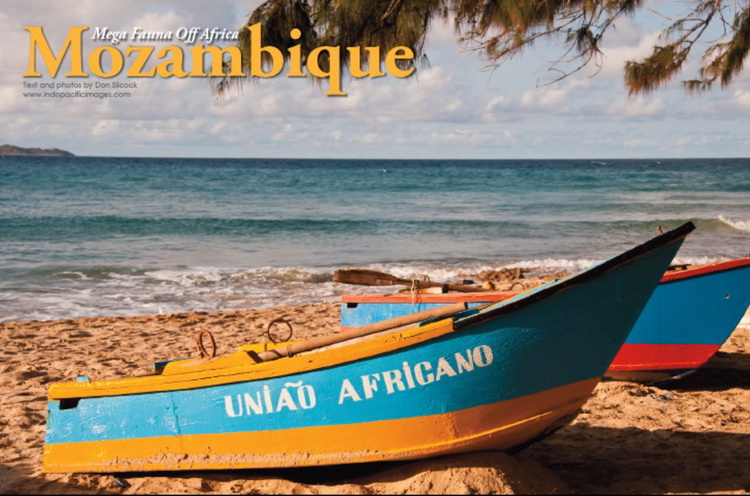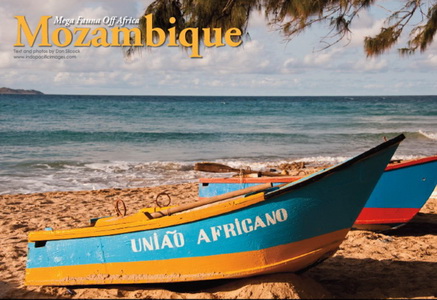Mozambique Megafauna Article… Along a 200km stretch of the Mozambican coastline, on the southeastern seaboard of Africa. Mother Nature has conspired to create what can only really be described as the perfect underwater biological storm.
For it is in this remote area that several major African and Indian Ocean currents converge. Together they produce unique and powerful counter-cyclic eddies that suck up rich nutrients from the deep trenches to the south. Creating huge quantities of zooplankton in the process – the life source of oceanic mega fauna.

This remarkable mechanism has been occurring largely unnoticed for thousands of years. And has played a major role in the evolution of two creatures at the tip of the megafauna food chain – the whale shark and the manta ray.
Because, unlike other large sources of zooplankton, which are typically periodic or seasonal, in Tofo it is constant.
The area is centered around the small town of Praia Do Tofo, in the southern Mozambique province of Inhambane. It is said to host to some 20% of the world’s population of whale sharks. Together with an estimated 1400 individual manta rays. Which is one of the largest populations of manta rays identified anywhere in the world.
Mozambique Megafauna X-Ray Magazine Article
The Mozambique megafauna was what I went to Tofo for. But what I discovered there was a lot more, with vibrant reefs and excellent biodiversity. However… Mozambique is a poor country still recovering from years of civil war. It has “issues” and they are serious – impacting on the very existence of the megafauna.
I wrote an in-depth 10 page article on my experience in Tofo which was published in the global dive magazine X-Ray. You can use the following link to download the complete Mozambique Megafauna article.
You can also check out the Complete Guide to diving Tofo in Southern Mozambique which contains virtually all you need to know about this special location.

Back To: The Complete Guide to Diving Tofo

